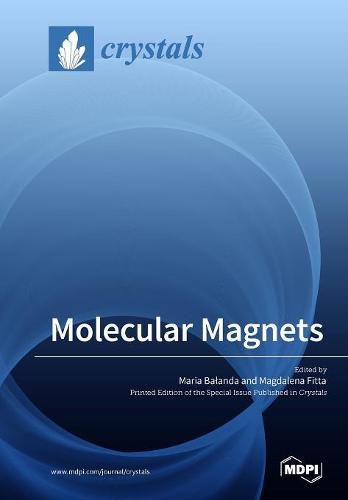Readings Newsletter
Become a Readings Member to make your shopping experience even easier.
Sign in or sign up for free!
You’re not far away from qualifying for FREE standard shipping within Australia
You’ve qualified for FREE standard shipping within Australia
The cart is loading…






This title is printed to order. This book may have been self-published. If so, we cannot guarantee the quality of the content. In the main most books will have gone through the editing process however some may not. We therefore suggest that you be aware of this before ordering this book. If in doubt check either the author or publisher’s details as we are unable to accept any returns unless they are faulty. Please contact us if you have any questions.
Molecular magnets show many properties not met in conventional metallic magnetic materials, i.e. low density, transparency to electromagnetic radiation, sensitivity to external stimuli such as light, pressure, temperature, chemical modification or magnetic/electric fields, and others. They can serve as functional materials in sensors of different types or be applied in high-density magnetic storage or nanoscale devices. Research into molecule-based materials became more intense at the end of the 20th century and is now an important branch of modern science. The articles in this Special Issue, written by physicists and chemists, reflect the current work on molecular magnets being carried out in several research centers. Theoretical papers in the issue concern the influence of spin anisotropy in the low dimensional lattice of the resulting type of magnet, as well as thermodynamics and magnetic excitations in spin trimers. The impact of external pressure on structural and magnetic properties and its underlying mechanisms is described using the example of Prussian blue analogue data. The other functionality discussed is the magnetocaloric effect, investigated in coordination polymers and high spin clusters. In this issue, new molecular magnets are presented: (i) ferromagnetic high-spin [Mn6] single-molecule magnets, (ii) solvatomagnetic compounds changing their structure and magnetism dependent on water content, and (iii) a family of purely organic magnetic materials. Finally, an advanced calorimetric study of anisotropy in magnetic molecular superconductors is reviewed.
$9.00 standard shipping within Australia
FREE standard shipping within Australia for orders over $100.00
Express & International shipping calculated at checkout
This title is printed to order. This book may have been self-published. If so, we cannot guarantee the quality of the content. In the main most books will have gone through the editing process however some may not. We therefore suggest that you be aware of this before ordering this book. If in doubt check either the author or publisher’s details as we are unable to accept any returns unless they are faulty. Please contact us if you have any questions.
Molecular magnets show many properties not met in conventional metallic magnetic materials, i.e. low density, transparency to electromagnetic radiation, sensitivity to external stimuli such as light, pressure, temperature, chemical modification or magnetic/electric fields, and others. They can serve as functional materials in sensors of different types or be applied in high-density magnetic storage or nanoscale devices. Research into molecule-based materials became more intense at the end of the 20th century and is now an important branch of modern science. The articles in this Special Issue, written by physicists and chemists, reflect the current work on molecular magnets being carried out in several research centers. Theoretical papers in the issue concern the influence of spin anisotropy in the low dimensional lattice of the resulting type of magnet, as well as thermodynamics and magnetic excitations in spin trimers. The impact of external pressure on structural and magnetic properties and its underlying mechanisms is described using the example of Prussian blue analogue data. The other functionality discussed is the magnetocaloric effect, investigated in coordination polymers and high spin clusters. In this issue, new molecular magnets are presented: (i) ferromagnetic high-spin [Mn6] single-molecule magnets, (ii) solvatomagnetic compounds changing their structure and magnetism dependent on water content, and (iii) a family of purely organic magnetic materials. Finally, an advanced calorimetric study of anisotropy in magnetic molecular superconductors is reviewed.